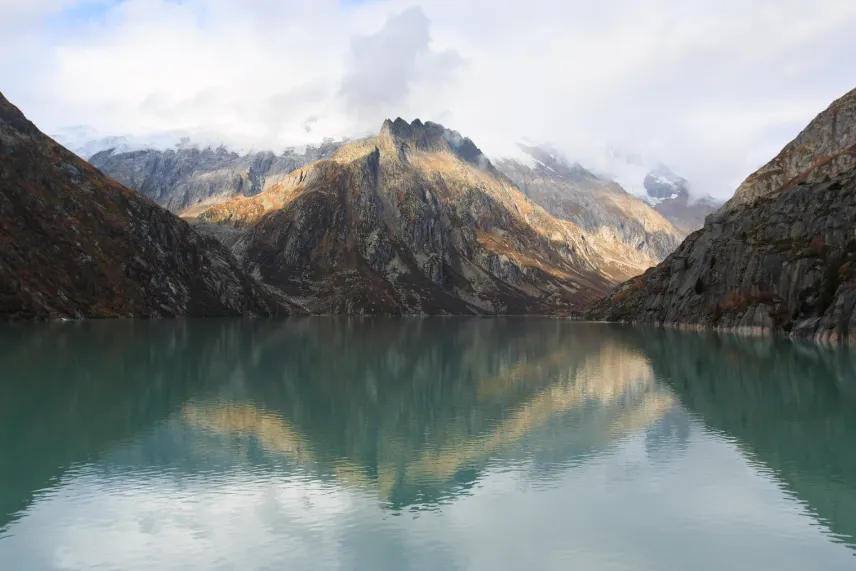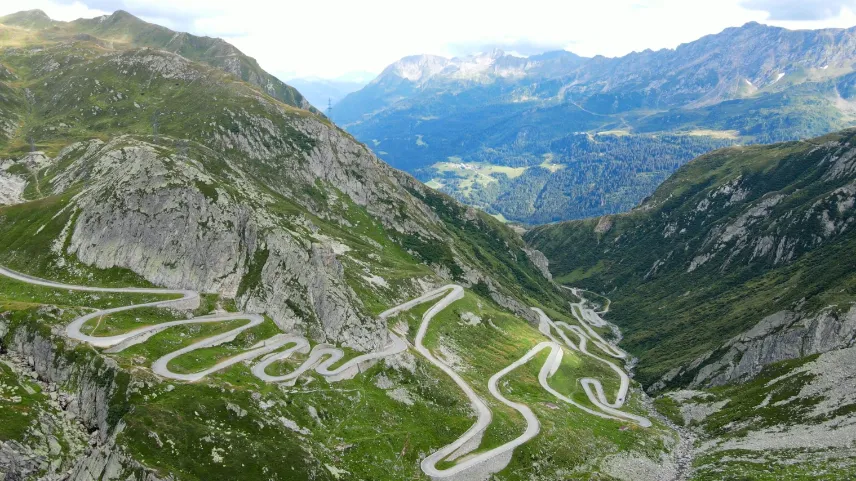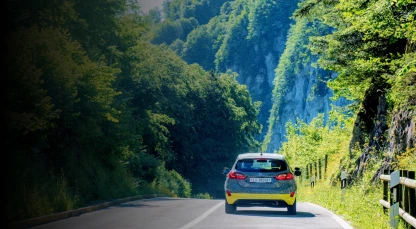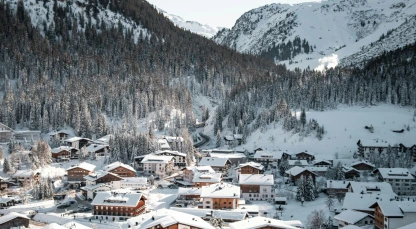Due to maintenance orders placed after 11 PM CEST will not be processed until the next day at 4 AM. If you travel before 4 AM we recommend to buy a physical sticker.
The Gotthard Tunnel
In this article, we introduce the Gotthard Tunnel, a vital link between northern and southern Europe. We'll examine how drivers can make use of this convenient road tunnel, its physical attributes, and its value to Switzerland and Europe. Also included is a wealth of useful information you'll need when using the fifth-longest tunnel in the world.
The Gotthard Tunnel - Vital connection between Switzerland and Italy
Nestled amidst the awe-inspiring Swiss Alps, the Gotthard Tunnel is an engineering marvel that traverses the heart of the mountainous terrain. Stretching nearly 17 kilometres (10.5 miles), this bi-directional tunnel offers an important link in the Swiss motorway network, connecting the northern and southern regions of Switzerland.
Situated in the canton of Uri, it links the toll roads of Göschenen in the north with those in Airolo in the south. It is a crucial thoroughfare between the cantons of Uri and Ticino.
Moreover, as a significant transalpine route, the tunnel is one of the key passages for drivers journeying between northern and southern Europe, embodying both Switzerland's engineering prowess and its crucial position in the European transportation network. With constantly updated live news, the tunnel is both safe and efficient.

Gotthard Tunnel Toll – Latest Fee Changes
In a recent referendum on the matter, a motion to introduce the payment of toll fees to use the Gotthard tunnel was defeated. This means that there is no additional charge to motorists wishing to use the route. However, it is important to remember that to access the tunnel efficiently, it is necessary to use various toll roads. As such, the purchase of an e-vignette is an indispensable part of using the tunnel.
In doing so, you can embrace the thrill of traversing the Gotthard Tunnel, a remarkable feat of engineering that serves as a conduit through the heart of the majestic Alps. For those behind the wheel, it's not merely a drive; it's a journey through history, innovation, and unparalleled scenic splendour, all encapsulated within this iconic passage.
Elevation and Length of the Gotthard Tunnel
When opened in 1980, the Gotthard Road Tunnel was considered the world's longest. Today, it ranks as the fifth-longest tunnel, measuring a maximum length of 16.9 kilometres (10.5 miles). The average elevation of the tunnel is approximately 1,700 meters (5,577 feet) above sea level.
Tunnel Specifications and Duration
| Northern Portal - Göschenen | 1,080 m (3,540 ft) |
| Highest Point | 1,175 m (3,855 ft) |
| Southern Portal - Airolo | 1,146 m (3,760 ft) |
| Tunnel Width | 8.6 m (28.2 ft) |
| Tunnel Height | 4 m (13.1 ft) |
| Average Journey Time* | 13 minutes at 80km/h (50mph) |
* Currently, the tunnel consists of a single bi-directional tube with one lane of traffic in either direction. One of the main complaints about the tunnel is the frequent traffic jams, particularly over weekends and holiday periods.
The Gotthard Tunnel is significantly shorter than the alternative Gotthard Pass. The pass covers 64 kilometres (40 miles). Travel times vary greatly depending on traffic volume and weather conditions, but should take between 1.5 and 2 hours
Tunnel Expansion Project
To address the abovementioned issue, the Swiss parliament has approved construction of a second tunnel. It will run roughly parallel to the existing route and is scheduled for completion in 2027. At this point, the original tunnel will be closed for refurbishment (expected to last from 2028 - 2030). Once restoration work is completed, each tunnel will facilitate one-way traffic with a hard shoulder for emergency use.
Terms of Use & Restrictions
Use of the Gotthard Tunnel is subject to specific rules and regulations.
Driving conduct and restrictions:
- The maximum speed of 80 kilometres per hour (50 miles per hour) is in place.
- It is advisable to equip vehicles with winter tires during colder months to ensure optimal traction and control.
- Seasonal restrictions or road closures may be implemented during heavy snowfall or adverse weather conditions. Certain periods might prohibit the access of buses and large trucks.
Special Provisions:
- Larger vehicles, caravans, or motorbikes must adhere to specific guidelines, including maintaining a safe distance between vehicles and obeying all traffic regulations to ensure the smooth flow of traffic within the tunnel. Drivers of large vehicles, especially lorries and buses must ensure that their vehicle does not exceed the maximum permissible height in the tunnel
- In the event of emergencies or accidents within the tunnel, drivers are instructed to follow designated emergency procedures, including promptly contacting the appropriate authorities and ensuring the wellbeing of all passengers.
Emergency Contact Numbers
- Ambulance: 144
- Police: 117
- Firefighters: 118
- Universal European emergency number: 112
- Swiss traffic information service (TCS) - +41 800 140 140
- Live traffic information and current queue length at gotthard-traffic.ch.
Understanding and adhering to these guidelines is crucial to maintaining the overall welfare and security of the tunnel's commuters.
Gotthard Tunnel Current & Live Webcam
The tunnel is open daily, 24/7, with the following exceptions:
The Gotthard tunnel is normally closed either from Wednesday evening at 23:00 to Thursday morning at 01:00 or from Thursday evening at 23:00 to Friday morning at 01:00 for special transports.
Gotthard Road Tunnel traffic varies tremendously, affected by factors such as time of day, season, traffic volume, weather, and other variables. There are a number of tools at the disposal of road users that can be helpful in planning a journey.
As mentioned above, the Swiss Traffic Information Service provides up-to-date information via their helpline: +41 800 140 140
Live traffic information, including the Gotthard Tunnel Webcam.
Gotthard Tunnel Weather - Although drivers generally aren't affected by weather while in the tunnel, they are advised to check the prevailing weather conditions at either end of the tunnel prior to travel.

Are there alternative routes to the Gotthard Tunnel?
For those seeking scenic detours or looking to avoid potential congestion at the Gotthard Road Tunnel, Switzerland offers alternative routes boasting breathtaking vistas and cultural discoveries.
- The Gotthard Pass has been an integral thoroughfare across the Alps since the Roman Era, and connects Andermatt in the north with Airolo in the south.
- The San Bernardino Pass, with its winding roads and panoramic views, provides an exhilarating journey for travelers venturing between Chur and Bellinzona.
- The Splügen Pass, known for its dramatic landscapes and hairpin bends, offers an unforgettable experience connecting Thusis and Chiavenna in Italy.
- The Nufenen Pass, the highest paved mountain pass in Switzerland, grants access from Ulrichen to Airolo.
Gotthard Tunnel FAQ:
- Continuous monitoring via cameras and sensors.
- Ventilation and fire protection systems are installed.
- Emergency exits and equipment are placed at strategic intervals throughout the tunnel.
- Maintenance and inspections are continuously implemented.




